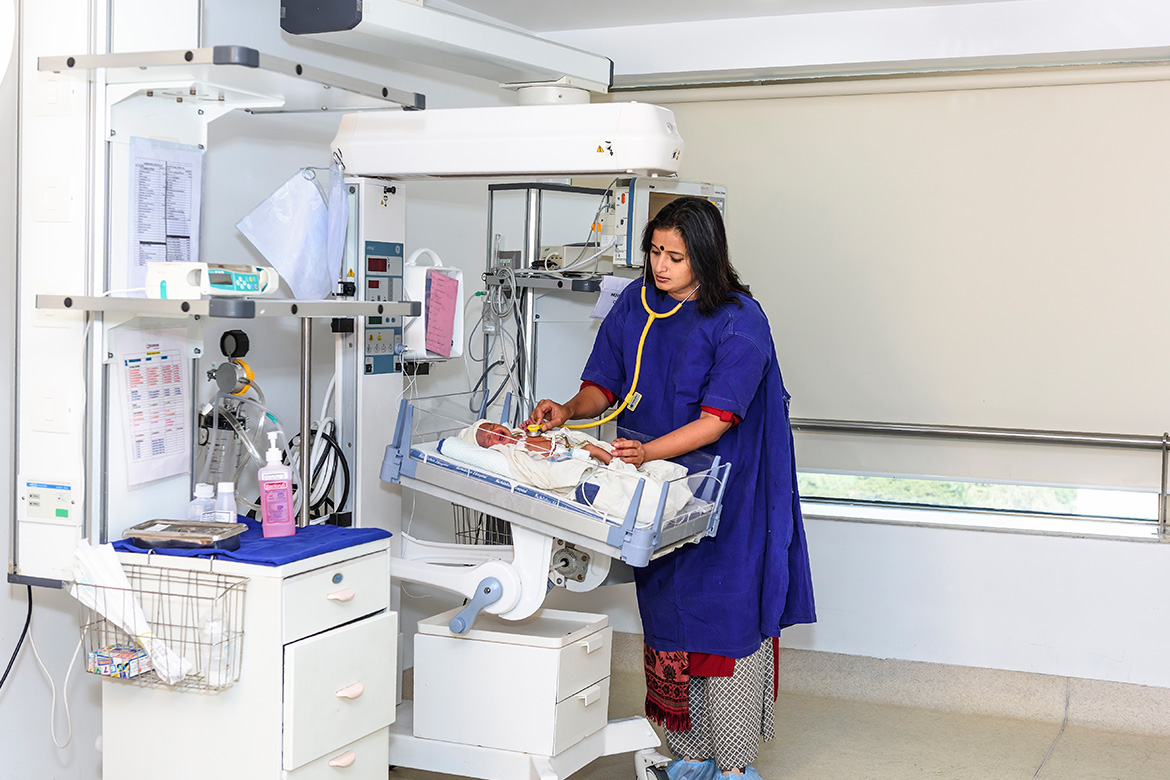Persistent Pulmonary Hypertension (PPHN) is the common end point of various pathophysiological processes operating in and ex utero. It is basically a failed transition of fetal circulation to neonatal circulation.
Pathophysiology of PPHN
The normal cardiorespiratory adaptations at birth are aeration of lungs, fall in pulmonary vascular resistance, closure of various fetal shunts – patent foramen ovale, ductus venosus and ductus arteriosus. Alterations in this normal adaptation process leads to PPHN.
Pathological Mechanisms Leading to PPHN in Various Disease Processes are Different as follows
- Maladaptation of Pulmonary Vessels (Perinatal Asphyxia, Meconium Aspiration Syndrome)
- Maldevelopment of Pulmonary Vessels (Primary Pulmonary Hypertension)
- Underdevelopment of Pulmonary Vasculature (Congenital Diaphragmatic Hernia)
- Structural/Functional Obstruction to Pulmonary Blood Flow
Clinical Features
- Cyanosis in spite of high supplemental O2
- Tachypnoea: 80-100/min
- Minimal signs on chest auscultation or CXR (exception pre-existing lung disease)
- Mild tachycardia
- Loud P2
- Pre & post-ducal oxygen gradient(~20 mm Hg)
- Hypotension
- Hyperoxia and hyperventilation test to differentiate it from cyanotic heart disease
Characteristic Features on Diagnosis
- Structurally normal heart on ECHO
- Severe hypoxaemia (PaO2 < 50mm Hg in 100% FiO2)
- Clinical/ECHO evidence of right to left shunt (pre and post-ducal oxygen gradients)
2-D ECHO – The Gold Standard
- Structurally normal heart with supra-systemic PA pressures, right to left shunting at the level of PFO and PDA, Dilated RV, TR
Principles of Management
- Restore Functional Residual Capacity
of the lung using conventional or High Frequency Oscillatory Ventilation (HFOV), lung recruitment strategies and optimum PEEP. Surfactant Therapy may play a role in conditions of secondary surfactant deficiency - Reduce Peripheral Vascular Resistance (PVR)
Maintain oxygenation > 80 mmHg. Nitric oxide is a selective pulmonary vasodilator. Other pulmonary vasodilator agents like milrinone also helps in resistant cases. Furthermore, other adjuvant therapies include avoiding hypercarbia, maintaining PH in the range 7.4-7.5, optimal sedation and muscle relaxation. - Inhaled Nitric Oxide
(iNO) decreases PVR and extrapulmonary veno-arterial shunting. It is contraindicated in severe IVH, platelets < 50000, lethal congenital malformation and irreversible lung pathology. It is commenced at 10 ppm and can be increased upto 40 ppm every 15-30 min. If there is a response, it is weaned once FiO2 requirements are < 50% by 5 ppm every 4-6 hrs. Patients are monitored for bleeding and methhemoglobin levels. Other pulmonary vasodilators like milrinone, sildenafil (PDE5 inhibition) and endothelin antagonist, Bosentan have shown efficacy in PPHN. Inspite of the above- mentioned strategies, if there is no response and oxygenation index is increasing, patients may need to be put on Extracorporeal Membrane Oxygenation (ECMO).
The morbidity and mortality is high, however, mortality has reduced from 40-60% to 10-15% with the use of modern technologies like HFOV and iNO.
 Back to Site
Back to Site